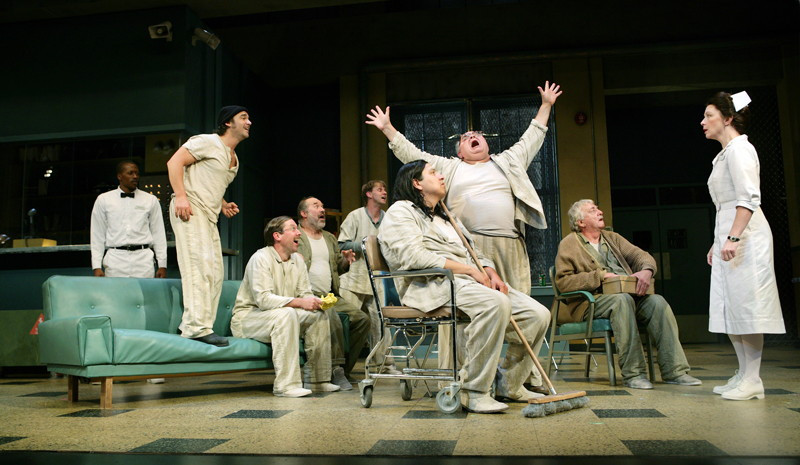Manitoba Theatre Centre goes Cuckoo
Ken Kesey’s novel makes magnificent leap from the page to the stage
The Manitoba Theatre Centre has found the perfect play to kick off their 2010-2011 season. The stage version of Ken Kesey’s classic 1962 novel One Flew Over the Cuckoo’s Nest has come to Winnipeg, and it’s worth every penny.
The novel was inspired by Kesey’s 1959 involvement in the CIA sponsored Project MKULTRA, which studied the effects of hallucinogenic drugs such as LSD and mescaline.
During this period Kesey interviewed patients at Menlo Park Veteran’s Hospital, which inspired him to write Cuckoo’s Nest.
The play opens with a recurring thumping noise coming out of the dark and the strained notes of a guitar.
As the curtain rises, the grinding noise of metal on metal pours from the speakers.
The curtain rises to reveal a cold, clinical set: bars on the windows, concrete everywhere and chain-link fences.
Chief Bromden stands in a spotlight and begins a disjointed monologue. It’s these monologues that act as a sort of narrative – the disjointed ramblings of a disturbed mind.
The story opens in a state mental ward in 1961. Convict Randle P. McMurphy enters the unit to finish off his jail sentence. He quickly starts a rebellion among the patients against the tyrannical Nurse Ratched.
Divided into the “acutes,” who are still believed to be curable, and the “chronics,” who are beyond help, the patients are colourful, humorous and tragic.
They include the mute and deaf Chief Bromden; Billy Bibbit, made nervous by his overbearing mother; Dale Harding, the repressed homosexual; Martini, the psychotic with severe hallucinations; Scanlon, who is obsessed with explosives and destruction; and Ruckly, who suffered a lobotomy and now only shouts profanities and stands silently in the crucifix position against the wall.
The most magical thing about the play is the characters – from the counterculture hero McMurphy, to the harsh and dramatic Nurse Ratched, to the other patients.
Kesey does a beautiful job of bringing to life society’s misfits, and the actors are brilliant at making Kesey’s characters jump from the page and onto the stage.
But perhaps the best part of the play is the horrific ending. The rebellion McMurphy inspired is brought to a crushing halt in a terrifying scene.
What ensues is heartfelt and heartbreaking, and the play ends as it started.
Overall the show is excellent and uses music and lighting to tremendous effect.
Published in Volume 65, Number 8 of The Uniter (October 21, 2010)







